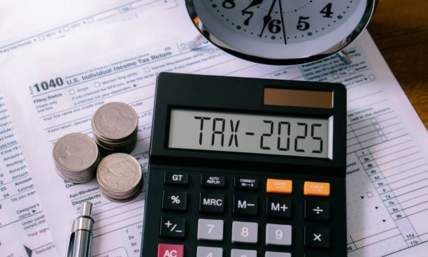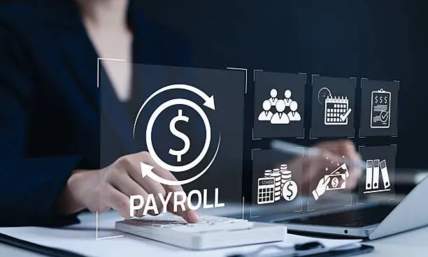How Can You Tell If Someone Is Using A Counterfeit Pay Stub
There are many outlets that scammers can use nowadays. They use spam emails, phishing phone calls or text messages, fake banknotes, and even photoshop-edited images or files. These fraudulent activities cost businesses a whopping USD$5.127 trillion each year.
For several years now, businesses have begun to see a new scam tactic to add to the aforementioned problems: the practice of using counterfeit pay stubs. This new fraud has especially taken a toll on car dealers and auto loan companies. Fake pay stubs can deteriorate a car dealer or auto loan broker’s relationship with banks, which, in turn, may lead to fines and legal actions.
Unfortunately, producing fake pay stubs for a car loan is all too easy. People planning to submit counterfeit pay stubs can create one on their own by simply watching tutorials online. Online companies that let their customers quickly create fake pay stubs for an incredibly inexpensive fee also exist.

Why do people use fake pay stubs?
Consumers who wish to qualify for a loan (e.g., auto loan or home loan) but don’t have a source of stable income or with low income may be tempted to faux pay stubs to be approved. It can be a significant problem because when an individual seeks credit, a pay stub is one of the basic documents lenders or brokers require. This is especially true when one is applying for a car loan. Pay stubs serve as proof that the borrower can be trusted to pay the loan responsibly.
Other reasons why loan applicants may use counterfeit pay stubs include not being employed long enough in a particular company and having a commission-based job. Someone unemployed might also look toward creating a fake pay stub to be approved for a loan.
Many people applying for a loan think that a faux pay stub is no big deal. Since they don’t have any documentation of their earnings, the most important thing for them is to get approved. After all, making up the information in the document is a pretty straightforward process after checking out a video tutorial online made by paystub frauds.

Is there a penalty for using counterfeit pay stubs?
Pay stubs are vital documents for employers (and employees). This is because it’s something that they provide to their team members regularly. That’s why they use pay stub generators online. That being said, not all pay stubs made through pay stub generation platforms are illegal. Nevertheless, some unscrupulous individuals still take advantage of even the most legitimate online pay stub makers to falsify their income information. They use these fake pay stubs to buy a car or for other high-ticket purchases. Tax evaders also use such a strategy to gain financial favors.
So, is there a penalty for using counterfeit pay stubs? The answer is yes! In fact, the penalty for such a deceitful act can be severe. We’re talking about jail time and fines that could total a million dollars. It makes sense because lying about your income is part of the IRS’ (Internal Revenue Service) ‘Dirty Dozen’ list.
For a middleman, such as car dealerships and loan brokers, their relationships with their borrowers and banks are crucial to success. That’s why a car dealer or loan broken really has to keep an eye out for pay stub-related frauds. Counterfeit pay stubs pose a major risk to the relationships that took them years to build when they go unnoticed.

How to identify a counterfeit pay stub
While it’s true that spotting the differences between a real pay stub and a fake one can be challenging, there are actually some tell-tale signs to keep in mind. Loan brokers have to look for these signs during the application process.
So, what are the signs if an applicant has provided a real pay stub or not? Here are some of them:
Check whether or not the pay stub looks professional
Real companies don’t produce unprofessional documents. It’s especially true for pay stubs, which are typically produced by accountants and HR professionals. Therefore, the first thing that one can do to tell if someone is using a counterfeit pay stub is to check whether the document looks professional.
Specifically, keep an eye on the following:
-
Document legibility: Legit pay stubs aren’t blurry. In fact, they appear completely legible. This means that anyone shouldn’t have any difficulty reading the document.
-
Content alignment: Words, characters, and numbers line up evenly in a real pay stub. Even decimals align properly. After all, legit pay stubs are done using accounting software, which helps align a pay stub’s content.
The problem with fake pay stubs is that their creators often don’t have time to accomplish them neatly. More often than not, they create the document fast, without much regard to the alignment of its content. Other than the alignment, it’s also common to notice an odd amount of spacing. Blank fields on year-to-date pay and deductions are also usually present. Something isn’t right when things don’t line up.
-
Font: Real pay stubs will always use a cold, calculated-looking font, not the flowery ones. The reason for it? To help computers read the numbers quickly and efficiently. Therefore, take a closer look at the font, too, when looking at a pay stub.

Double-check the pay stub’s details
Aside from the pay stub’s look, every document detail, even the most basic information, must also be checked. Why is this necessary? Because those who choose to go through the trouble of falsifying a document have to fill in the required information themselves. And, since they’re not qualified to make such a legal document, there’s a huge chance that they’ll make a typo or skip an essential section.
The truth is that missing basic information in a pay stub signals that you may have received a counterfeit document. Most pay stubs will include basic details about the borrower or applicant, including:
-
Name
-
Address
-
Company information
The document should also show the borrower or applicant’s gross pay, taxes, and insurance deductions. Any discrepancy with the abovementioned pieces of information is a sign that you’re dealing with fraud. However, even if all basic details appear, double-check to ensure that they’re consistent with each other.

Calculate everything
Calculating the numbers in a pay stub is another effective way to spot a fake one. Even using a simple calculator device is enough for this step. If you don’t have a dedicated calculator device, use your smartphone’s calculator app instead.
Here are the things to calculate:
-
Income: Add everything to see if the result matches the total.
-
Deductions: Make sure that the result after subtracting the deductions from the total makes sense.
You’ll know you’re looking at a counterfeit pay stub if anything doesn’t add up or make sense from a mathematical perspective.
Also, before you start calculating the numbers, don’t forget to check to see if the actual figures appearing on the document have been rounded. Legitimate pay stubs rarely contain rounded figures. Extra dollars and even cents almost always come out on real ones. Thus, be wary of rounded numbers. It’s another red flag to keep in mind when checking the pay stub that a loan applicant submits.
Contact the employer indicated on the pay stub
The employer information that the applicant or potential borrower provided is one of the biggest red flags loan brokers will find when coming across fake pay stubs. It could be a phone number appearing too standard, contact information not lining up correctly, or a seemingly non-existent address. Therefore, contact the employer right away if you’re hesitant about the information provided.
However, it’s essential to note that the employer phone number the applicant or potential borrower placed on the pay stub may be invalid. Of course, they’ll try their best to cover their tracks when committing to creating a counterfeit pay stub. It’s even possible that the listed phone number is that of a friend they’ve hired to act as the employer.
That’s why it’s best to Google the employer’s name to see if the contact information will appear. If Google returns something, then call that number instead. Once you’re connected, don’t forget to verify that the person who submitted the pay stub is part of their organization.
If you’re worried that you’ll be in an awkward situation by doing so, then know that such kinds of calls are actually not new to most employers. That said, most of them would be willing to verify certain information to help ease your mind.

Ask for additional documents
Cross-referencing is also a good technique for catching fake pay stubs. To do it, request additional documents other than a pay stub from an applicant or potential borrower.
Some additional documents you can ask for include:
-
Bank statement to check if the amount deposited into their account matches how much they’re paid biweekly or monthly.
If tax returns don’t match the numbers in the pay stub or the bank account statement doesn’t reflect the monthly pay indicated in the pay stub, it’s a red flag.
Final Thoughts
Counterfeit pay stubs are one of the commonly utilized methods of application forgery these days. Unfortunately, the host of websites that help individuals create pay stubs using templates makes it easier for scammers to use a fake pay stub for their fraudulent activities.
For businesses, especially car dealerships, lenders, and loan brokers, the good news is that counterfeit pay stubs become easier to spot when you know what to look for when looking at one.
Hopefully, what you’ve learned here can help you tell if someone is using a fake pay stub or not.















